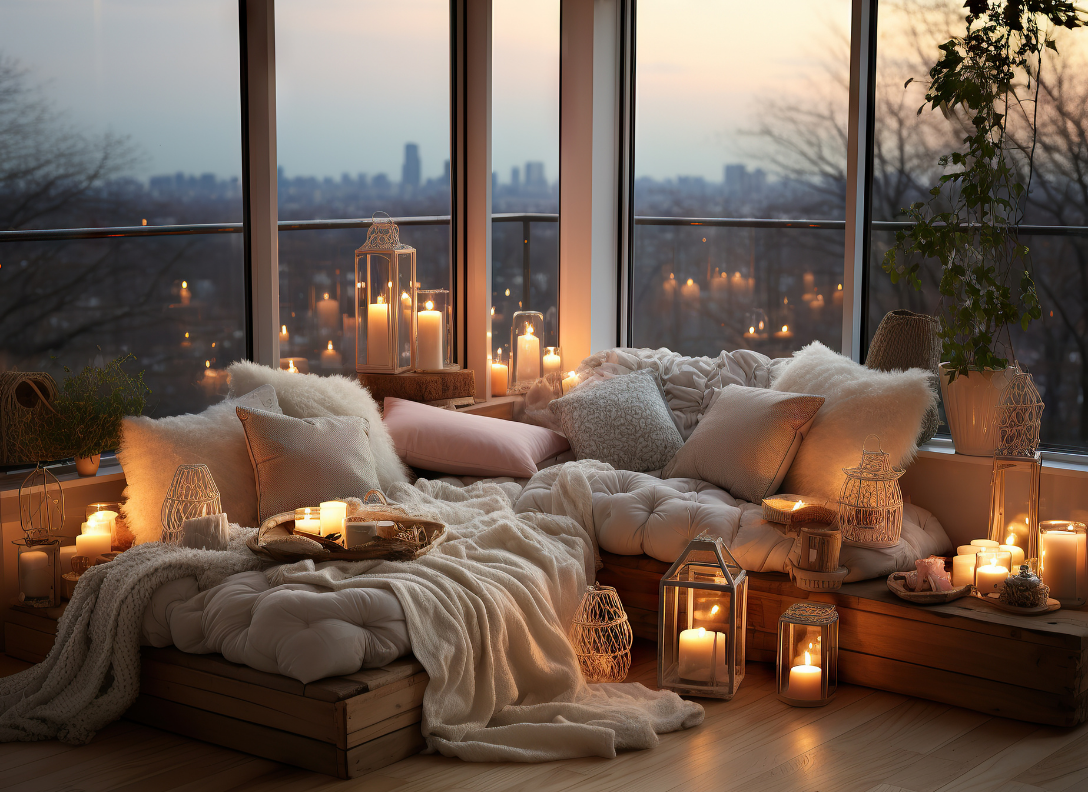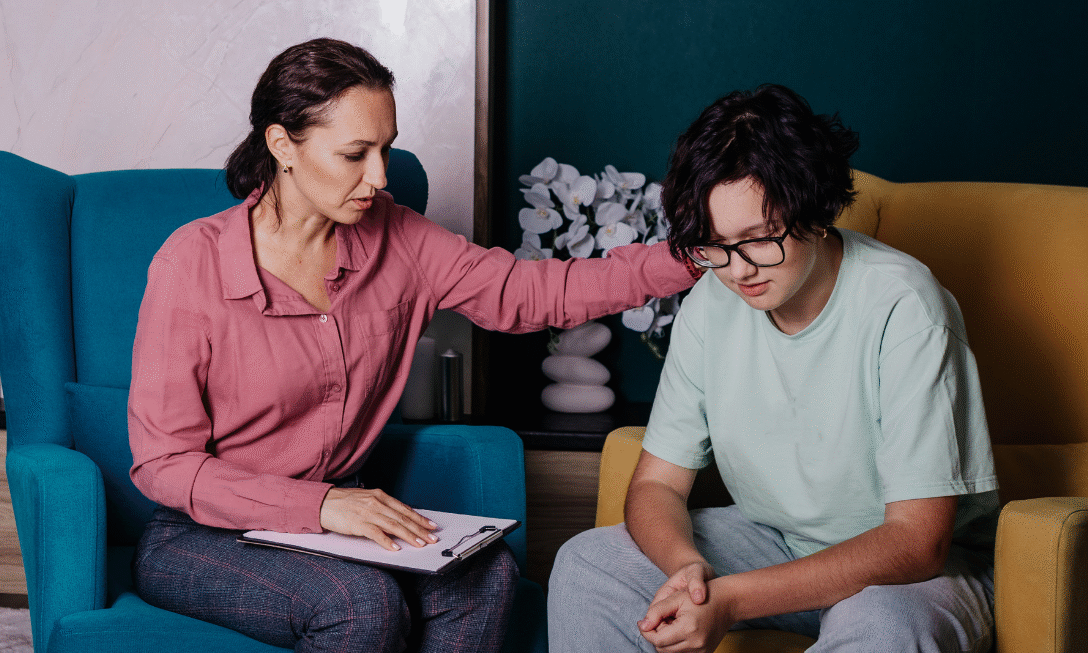Home is more than a roof over your head. It’s the place you return to after long days, where you recharge, and where memories are made. But not every house or apartment automatically feels warm and inviting. Some spaces look nice but feel sterile more like hotel rooms than homes. Others feel cold or cluttered, making it difficult to truly relax.
The good news? You don’t need a massive renovation budget to fix that. Making your home cozy comes down to a series of small, intentional choices. A warm lamp instead of a harsh overhead light, a textured rug on bare floors, a candle burning in the evening, or a throw blanket draped over your couch—these touches add layers of comfort and personality.
Coziness isn’t about chasing trends. It’s about creating an atmosphere that feels personal and comforting to you. That means adding elements of warmth, texture, and identity to every room.
This guide will walk you through the best ways to make your home cozy. We’ll explore lighting, colors, textiles, plants, and layout. We’ll also break it down room by room, show you seasonal tweaks, share common mistakes to avoid, and answer the most popular questions about coziness.
By the end, you’ll have a practical roadmap for transforming your home into a sanctuary that feels welcoming every time you walk in the door.
The Psychology of Coziness
Coziness is less about “stuff” and more about emotional cues. Our brains interpret certain visual and sensory signals as comfort. These include:
- Warmth: Lighting, textures, and color palettes that suggest safety.
- Personalization: Objects that reflect your identity—photos, books, artwork.
- Layers: A mix of textiles, décor, and textures makes a room feel lived in.
Cold, empty spaces often feel unfinished because they lack these cues. Cozy homes combine them intentionally.
Hack #1: Lighting Sets the Mood
Lighting is the single most powerful way to change how a room feels. A cold fluorescent bulb makes even a nicely decorated room feel sterile. Warm lighting, on the other hand, instantly makes spaces feel more intimate.
- Swap out cool daylight bulbs for warm-toned LED bulbs (2700K–3000K). These mimic soft sunlight or candlelight.
- Use multiple light sources instead of one overhead fixture. A mix of floor lamps, table lamps, and wall sconces adds depth and reduces harsh shadows.
- Add dimmers to adjust brightness throughout the day. Bright for working, low and warm for relaxing.
- For a quick fix, string lights, fairy lights, or lanterns bring instant warmth to a room, especially bedrooms or cozy reading corners.
Example: A small apartment living room can feel ten times more welcoming by simply turning off the ceiling light and switching on two warm table lamps and a string of fairy lights.
Hack #2: Textiles & Layers
Texture adds depth and comfort. A room with only hard surfaces—wood floors, bare tables, minimal seating—feels cold and echoey. Adding textiles softens everything.
- Throws & Blankets: Drape them on couches, chairs, or beds. Chunky knits in winter, light cotton in summer.
- Pillows: Mix sizes and fabrics (linen, velvet, wool) for variety.
- Rugs: Anchor a space and make it feel grounded. Even one area rug transforms a bare floor. Layer smaller rugs for added interest.
- Curtains: Heavy drapes in winter block drafts and add visual warmth; sheer curtains in summer soften sunlight.
Example: A plain white sofa looks sterile until you add three pillows in earthy tones and a textured throw. Suddenly, it’s an inviting spot.
Hack #3: Cozy Color Palettes
Color influences mood. Stark whites and cool grays can make a room feel cold. Warm neutrals make it feel inviting.
- Warm neutrals: Beige, taupe, terracotta, cream.
- Accent colors: Olive green, rust, navy, deep mustard.
- Avoid all-white unless layered with texture (wood, rugs, fabrics).
👉 Even a single accent wall painted in a muted earth tone can add depth and warmth.
Hack #4: Scent & Atmosphere
Scents are powerful memory triggers. A home that smells good feels more inviting.
- Candles: Vanilla, sandalwood, cinnamon, lavender.
- Essential oils: Use diffusers for calming scents like eucalyptus or cedar.
- Simmer pots: Boil water with citrus peels, cloves, and cinnamon for a natural fragrance.
Example: Lighting a candle after work signals your brain it’s time to relax.
Hack #5: Personal Touches Matter
Cozy homes feel lived in. If your décor looks like a furniture showroom, it might look nice but not feel personal.
- Display photos, souvenirs, or handmade crafts.
- Showcase books, records, or hobbies.
- Rotate décor seasonally for freshness.
Personal touches tell your story, making your home uniquely yours.
Hack #6: Furniture Placement for Comfort
Where you put your furniture matters as much as what you buy.
- Arrange seating in clusters that encourage conversation.
- Pull furniture away from walls to create intimacy.
- Add cozy corners: a reading chair, small table with lamp, or window seat.
Example: Two chairs angled toward each other with a small table between them feel more inviting than a row of chairs against a wall.
Hack #7: Add Nature Indoors
Humans instinctively relax around nature. Bringing plants inside adds coziness.
- Houseplants: Snake plant, pothos, peace lily, or monstera are easy to care for.
- Natural materials: Wood, stone, wicker baskets, linen curtains.
- Flowers: Fresh blooms add warmth and color.
Even one potted plant on a shelf softens a room.
Hack #8: Seasonal Coziness
Switching up décor with the seasons keeps a home feeling fresh.
- Fall/Winter: Heavy blankets, candles, deep colors, soft lighting.
- Spring/Summer: Fresh flowers, light fabrics, open windows, breezy curtains.
These seasonal changes prevent your space from feeling stale.
Hack #9: Declutter Without Sterilizing
Clutter overwhelms, but extreme minimalism feels empty. The goal is balance.
- Keep surfaces clean but display a few personal items.
- Use baskets and bins for organization.
- Donate items you no longer need.
A cozy home is organized, but not lifeless.
Hack #10: Sound & Comfort
Coziness isn’t just visual—it’s sensory.
- Play soft background music or nature sounds.
- White-noise machines or fountains create calm.
- Silence in the right room can be cozy too.
Room-by-Room Cozy Makeover Guide
Living Room
- Add layered lighting and a large area rug.
- Throw blankets and pillows make seating inviting.
- Keep a basket of books or magazines nearby.
Bedroom
- Focus on bedding—soft sheets, warm throws, cushioned headboard.
- Bedside lamps instead of harsh overhead light.
- Rugs beside the bed for warmth underfoot.
Kitchen
- Display fresh fruit in bowls.
- Add small potted herbs on the windowsill.
- Open shelving with neat jars of pasta, grains, or spices.
Bathroom
- Replace cold bulbs with warm lighting.
- Add plush towels and mats.
- Candles or diffusers create a spa-like feel.
Entryway
- A rug and small bench set the tone.
- Hooks for coats/bags keep it organized.
- Plants or candles welcome you home.
Home Office
- Use warm lighting instead of harsh overheads.
- Add personal touches—plants, photos, artwork.
- Keep a soft blanket over your chair for comfort during work.
FAQs
Q1: Can a modern, minimal home still feel cozy?
Yes. Add warmth through textiles, plants, and warm-toned lighting. Cozy minimalism is about comfort without clutter.
Q2: What’s the cheapest way to make a home cozier?
Lighting and textiles. Swap bulbs, add a few throw blankets or candles, and your home feels instantly warmer.
Q3: Do colors really matter for coziness?
Absolutely. Warm neutrals (beige, terracotta) feel inviting. Cold whites and grays feel clinical unless softened with texture.
Q4: How do I make my bedroom cozy without cluttering it?
Keep it simple: layered bedding, rugs, bedside lamps, and one or two personal accents. Avoid overcrowding.
Q5: Can small apartments feel cozy without feeling cramped?
Yes. Stick to a warm color scheme, use vertical storage, add mirrors to open sight lines, and keep décor intentional.
Q6: Do plants actually make a difference?
Yes. Plants soften rooms, improve air quality, and add natural calmness. They’re one of the easiest cozy upgrades.
Q7: What’s the fastest cozy upgrade I can make?
Change your lighting. Replace one cold bulb with a warm lamp, and you’ll notice an immediate difference.
Q8: How do scents affect coziness?
Scents trigger memory and mood. Vanilla, cinnamon, and lavender are proven to promote calmness and comfort.
Q9: Can technology make a home cozier?
Yes. Smart bulbs with dimming/warm settings, speakers with ambient playlists, or automated candles all add atmosphere.
Q10: How do I make my home cozy year-round?
Adapt seasonally: candles and knits in winter, flowers and breezy fabrics in summer. Rotate décor so it always feels fresh.
Coziness isn’t about money or following design trends—it’s about creating a space that makes you feel comfortable and at peace. A cozy home is layered, warm, and personal. Lighting sets the mood, textiles add softness, scents create atmosphere, and personal touches make it uniquely yours.
Think of coziness as a daily gift to yourself. Walking into a warm, inviting space after a long day changes how you feel. It helps you recharge and makes your home more than just functional—it makes it comforting.
And you don’t need a massive budget. Cozy upgrades are affordable: swap bulbs, add a rug, light a candle, bring home a plant. These small changes snowball into a completely new atmosphere.
👉 Action Step: Tonight, turn off your overhead lights. Switch on a warm-toned lamp, light a candle, and put on soft music. Notice how your space feels immediately cozier with just those three adjustments.
Your home doesn’t have to look perfect—it has to feel like home. By layering warmth, light, and personality, you’ll create a sanctuary that supports your well-being every single day.




